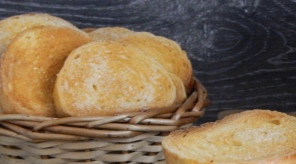



You don't have to be an expert in baking to make crackers at home. A little desire, a little patience, the availability of the necessary products and strict adherence to the recipe are the key to truly tasty, aromatic and crispy homemade crackers. Such pastries are stored for quite a long time, and you get a lot of them, so from words to deeds!
We will make the dough for homemade breadcrumbs using yeast without a pair, that is, using fast-acting yeast. If you wish, you can increase the amount of sugar if you like very sweet pastries (according to this recipe, crackers are moderately sweet). In addition, lovers of raisins, candied fruits, nuts and other flavoring fillers can safely experiment with additives.

You don't have to be an expert in baking to make crackers at home. A little desire, a little patience, the availability of the necessary products and strict adherence to the recipe are the key to truly tasty, aromatic and crispy homemade crackers. Such pastries are stored for quite a long time, and you get a lot of them, so from words to deeds!
We will make the dough for homemade breadcrumbs using yeast without a pair, that is, using fast-acting yeast. If you wish, you can increase the amount of sugar if you like very sweet pastries (according to this recipe, crackers are moderately sweet). In addition, lovers of raisins, candied fruits, nuts and other flavoring fillers can safely experiment with additives.
Sign up to receive email updates on new recipes.